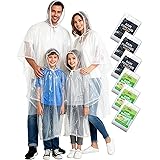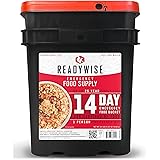Planning Your Survival Strategy
Assessing Risks and Resources
When it comes to survival, the first thing I always do is assess my situation. What are the potential hazards in my area? Natural disasters, economic instability, or even health crises weigh heavily on my mind. Having a clear picture of what I might face allows me to better prepare myself.
Next, I take stock of the resources available to me. This includes everything from food and water supplies to technology and skills. It’s like piecing together a puzzle; once you’ve got all your pieces in front of you, the bigger picture becomes clearer.
Using technology, I can even map out the local resources. Apps that track emergency supplies or local shelters can help provide vital information when it’s needed most. It’s all about making informed decisions before trouble strikes.
Creating an Emergency Plan
Once I know what I’m up against, I draft an emergency plan. This plan covers various scenarios, ensuring I’m ready for anything. Whether it’s a power outage or a need to evacuate, the peace of mind that comes with planning ahead is invaluable.
Technology plays a significant role here as well. I utilize apps to set reminders and outline escape routes. A well-defined plan will assure I’m not scrambling at the last minute – and trust me, you’ll thank yourself later.
Don’t forget to communicate this plan with family and friends. If something happens, everyone should be on the same page, ready to execute the plan swiftly. Technology can help keep everyone connected through group chats and alerts as situations unfold.
Staying Informed with Real-time Data
In the age of information, staying updated is easier than ever. I rely on various apps and websites to stay informed about local weather conditions, news alerts, and emerging threats. You never know when a storm might be brewing or a viral outbreak could begin in your area.
Real-time data helps me adapt my survival strategies. For instance, knowing when to stock up on necessities before a major storm hits can make all the difference. I’ve learned to trust the sources I follow but remain skeptical of unreliable information.
== > What if ... Get a FREE Subscription to PREPARE
Don’t forget about social media. Following local emergency services on social platforms allows me to get instant updates. It’s amazing how connected we can be in times of crisis, and staying plugged in means I can react promptly.
Enhancing Physical Preparedness
Gathering Essential Tech Gear
One area where tech really shines is in gear selection. There’s a ton of cool equipment that can make a huge difference in survival situations. I always recommend investing in a good multi-tool – they’re compact and packed with usefulness.
Solar-powered chargers are another must-have for me. When the power goes out, keeping my devices charged can be a lifesaver. It allows me to stay connected, use apps, and even listen to emergency broadcasts.
Don’t skip over communication devices. A two-way radio can be a great way to stay in touch with loved ones when traditional networks fail. Understanding how to use your gear before you need it is part of being prepared. Practice makes perfect!
Maintaining Physical Health
Your physical health is just as important as your supplies. I keep track of my nutrition and fitness levels, ensuring that I’m prepared both mentally and physically for any challenge. There are wearable fitness trackers that monitor my health metrics, keeping me aware of my body’s needs.
Furthermore, I use various health apps to keep tabs on my diet. These help me plan meals that bolster my energy levels, which can come in handy when I’m in high-stress situations. Being fit means I’m more capable of handling emergencies!
Additionally, I’ve found that incorporating mental health apps into my routine helps tremendously. Surviving isn’t just about physical readiness but also mental resilience. Mindfulness apps can help keep my stress levels in check, allowing me to think clearly when it matters most.
Regular Drills and Simulations
Practicing my emergency plan through drills is something I can’t emphasize enough. I sometimes simulate scenarios using virtual tools or apps that simulate emergencies. This kind of practice makes it easier to respond in real-life situations.
I also involve my family in these drills, ensuring everyone knows their roles. By integrating technology into our simulations, we can track our responses and improve upon them. It turns preparation into a fun family activity!
Moreover, I often review the outcomes of these drills. What went well? What could be better? Analyzing my performance helps me refine my strategies, ensuring I’m as prepared as possible for whatever life throws my way.
Leveraging Technology for Resources
Finding Survival Tutorials and Guides
The internet is a treasure trove of information when it comes to survival skills. YouTube and various blogs have countless tutorials on everything from foraging to self-defense. I’ve personally learned how to purify water and identify edible plants all thanks to a few videos!
Besides watching tutorials, I make sure to take notes or even create my own guides. You never know when you might need these skills, so having them on hand can be super helpful. I sometimes organize this information in cloud storage, making it accessible no matter where I am.
Don’t forget to check local classes or community resources too! Often, there are workshops that can teach you hands-on skills that online videos simply can’t replicate. Plus, you can meet other like-minded individuals who are into prepping!
Get Preparedness and Self-Reliance Tips. Subscribe Now!
Utilizing Online Communities
There’s something incredibly empowering about connecting with a tribe of fellow preppers. Various online forums and social media groups provide support, tips, and shared experiences that are invaluable. Everyone has unique experiences to share, and I’ve learned a huge amount from these communities.
The best part is that online communities are often quick to share updated information about threats or best practices. Being part of a supportive network can ease some of the loneliness that can come with prepping.
Engaging with these communities often brings new friends into my life, all while we work towards the same goal of being prepared. Plus, participating in discussions can help refine my own strategies, making me a better prepper!
Shopping Smart with Survival Apps
With the advent of technology, hunting for supplies has become a lot more convenient. I frequently use survival shopping apps that can compare prices and find the best deals on essential items. It saves me time and money, which is always a win in my book.
These apps often have reviews, too, helping me choose quality gear from reputable brands. I learned the hard way that not all survival gear is created equal, and getting the right tools is essential for successful prepping.
Lastly, such apps can keep me organized, maintaining a checklist of items I still need. This helps curb impulse buys and ensures that I have everything I need laid out clearly. Ticking off items feels almost satisfying – it’s about progression!
Preparing for the Worst with Backup Plans
Diversifying Your Emergency Supplies
When it comes to prepping, I believe in the saying, “Don’t put all your eggs in one basket!” This means diversifying my emergency supplies. I don’t just rely on one food source or one means of communication – I ensure I have alternatives lined up.
For instance, having multiple ways to purify water is crucial. Besides water filters, I keep purification tablets on hand as a backup. This redundancy is comforting and can save me when all else fails.
It’s also smart to have a mix of food supplies, from dehydrated meals to canned goods. By exploring various food options, I ensure I won’t get caught off-guard if one supply runs out or is compromised.
Backup Communication Methods
After diving into my communication options, I found that it’s vital to have several ways to connect during a crisis. My smartphone is my go-to, but it’s good to remember that it can only be effective when the networks are operational. I keep a charged satellite phone as my backup and learn about ham radios—both can come in handy when traditional communication fails.
Moreover, having a designated meeting place for my family is crucial if we get separated. Everyone should know where to go to reconnect under any circumstance. This simple piece of the puzzle allows me to prioritize loved ones even in a tough situation.
As a last resort, I’ve been practicing basic sign communication techniques. It sounds a bit odd, but a few hand signals can dramatically improve communication if voice methods fail completely. Keeping this in mind helps me feel a bit more secure.
Regularly Reassessing Your Preparedness
One of the biggest lessons I’ve learned is that preparation isn’t a one-and-done task. I make it a habit to regularly reassess my supplies and strategies. This can be seasonally or semi-annually, but I find it’s crucial to stay up to date.
I look at the expiry dates of my stored foods, check if my gear is still functional, and update my emergency plan based on recent events and lessons I’ve learned from past experiences. This practice has saved me more than once!
Additionally, I encourage my friends and family to join in on these assessments. It fosters a shared sense of responsibility and preparedness, making the process a lot more enjoyable. Plus, more eyes can catch things I might miss!
Conclusion
In wrapping up, my journey towards smart prepping has been incredibly rewarding. Utilizing technology not only enhances my standard of preparation but has also increased my confidence in facing whatever might come my way. By planning, enhancing physical readiness, leveraging technology, and preparing backups, I stay ready for anything life throws at me!
FAQ
1. What are some good resources for learning survival skills?
You can find a ton of tutorials online on platforms like YouTube, as well as blogs focused on prepping. Participating in local classes can also be very effective.
2. How can I stay updated on local emergencies?
Using weather and news apps can help keep you informed. Additionally, following local emergency services on social media provides real-time updates.
3. What technology do you recommend for emergency communication?
Having a smartphone is great, but consider investing in a satellite phone or ham radio as backups. These will work when cell networks are down.
4. Why is physical fitness important for survival preparedness?
Being physically fit enhances your ability to react quickly in emergencies and manage stressful situations. It contributes to overall well-being, making you more resilient.
5. How often should I reassess my emergency plan and supplies?
I recommend reassessing your supplies and strategies at least twice a year or seasonally. This helps keep everything current and ensures you’re always ready.






